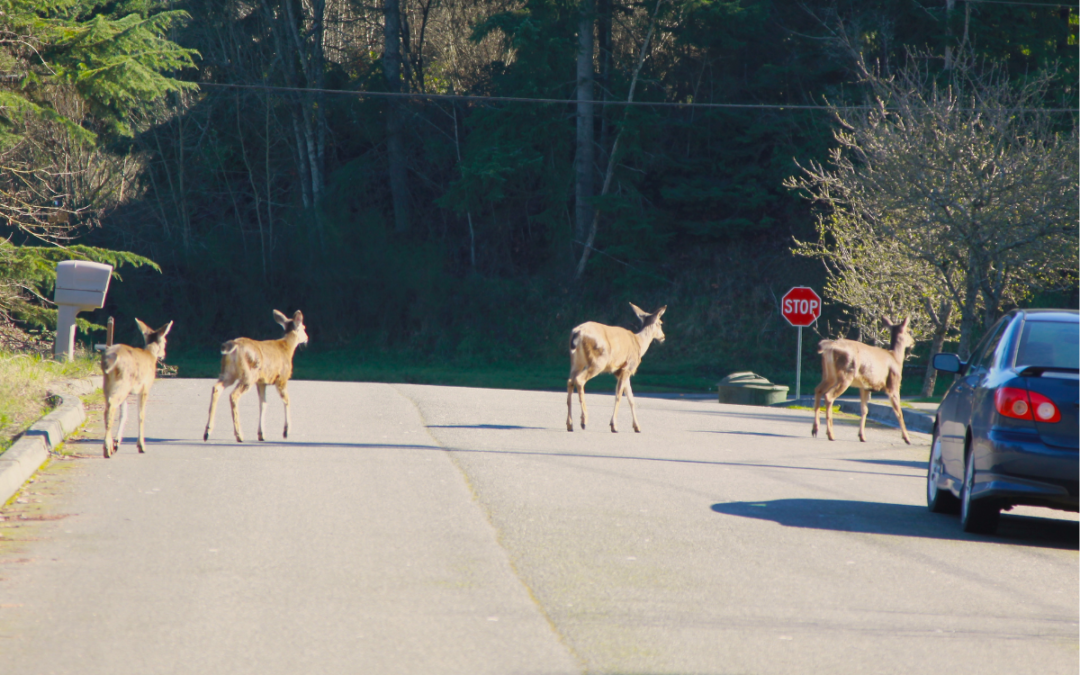Wildlife Encounters and Roadkill
Defensive Driving |
Driving on the open road can be a breathtaking experience, often bringing you closer to nature. However, encounters with wildlife, both alive and as roadkill, are common and can pose challenges. In this article, we’ll explore how to handle such situations responsibly and safely, while respecting the environment.
This blog may contain affiliate links, and if you make a purchase through these links, we may or may not earn a commission at no extra cost to you.
Encounters with Wildlife on the Road
Slow Down and Stay Alert
When driving in areas known for wildlife crossings or through natural habitats, reduce your speed and stay vigilant. Animals can appear suddenly, especially during dawn and dusk when they are most active. Slowing down gives you more time to react and reduces the likelihood of a collision.
Give Animals Space
If you spot wildlife on the road or near it, slow down further and give them plenty of space. Honking or flashing headlights may startle them and lead to erratic behavior, increasing the risk of accidents. Remain patient and let the animals move at their own pace.
Use Your Horn and Lights Wisely
In some situations, a gentle tap of your horn or using your high beams may help alert animals to your presence without causing them undue stress. However, be cautious not to overdo it, as this can have the opposite effect.
RELATED ARTICLE: Driving Defensively in Wildlife Areas
Handling Roadkill Responsibly
Check for Signs of Life
If you come across an injured animal, assess its condition from a safe distance. If the animal is still alive and in distress, contact local wildlife rescue organizations, animal control, or your local authorities for assistance. Do not attempt to handle the animal yourself unless you are trained and equipped to do so.
Safely Move Roadkill Off the Road
If you encounter a deceased animal on the road and it’s safe to do so, consider moving it out of the road to prevent further accidents. Use caution, wear gloves if available, and always avoid direct contact with the animal. If moving the animal is not feasible or safe, alert the local authorities or highway maintenance personnel to address the situation.
Observe Wildlife Regulations
In some areas, there may be regulations regarding the handling or possession of roadkill. Always comply with local laws and guidelines. In some cases, you may need to report roadkill to the appropriate authorities for disposal.
Avoid Taking Wildlife as Trophies
It’s important to resist the urge to take roadkill as a souvenir or for personal use. Many species are protected by law, and removing them from their natural habitat can have negative ecological consequences.
LEARN MORE: California Department of Fish and Wildlife
Driving alongside wildlife and encountering roadkill can be a part of the road trip experience. By staying alert, reducing speed, and giving animals space, you can safely share the road with our furry and feathered friends. When faced with injured wildlife or roadkill, always prioritize safety, follow local regulations, and seek assistance when necessary. Respecting wildlife and the environment while driving not only protects these creatures but also enhances our appreciation for the natural world around us.
Drive with Confidence!
Keep up with all the latest driving news. Expolre our blog packed with essential tips and expert advice on all things related to DRIVING!




